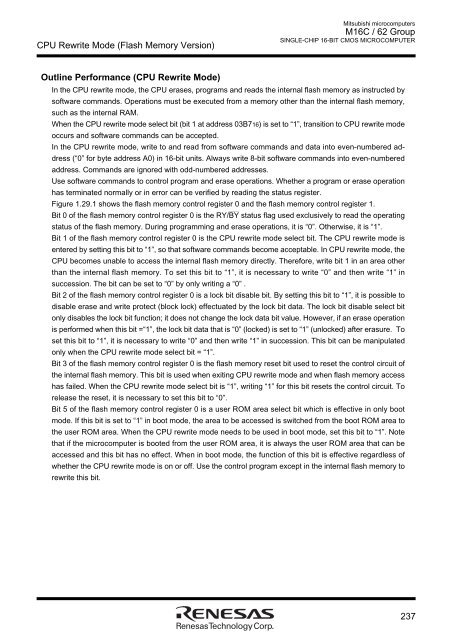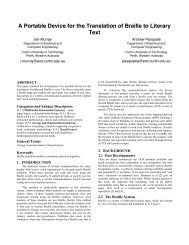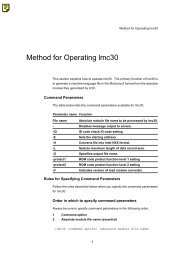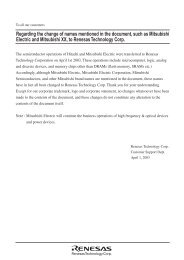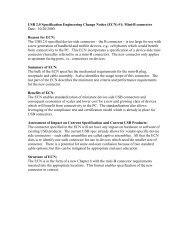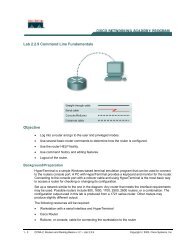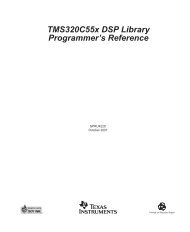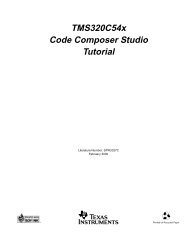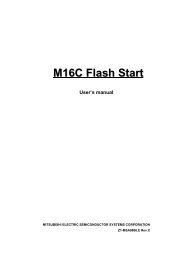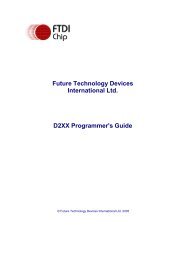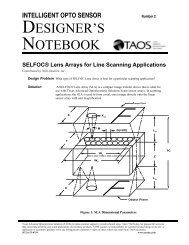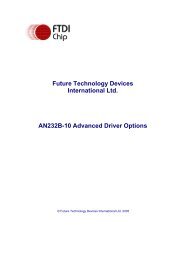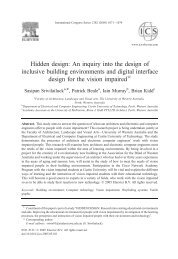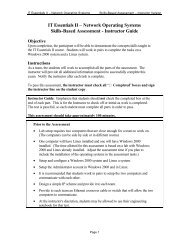Create successful ePaper yourself
Turn your PDF publications into a flip-book with our unique Google optimized e-Paper software.
CPU Rewrite Mode (Flash Memory Version)Mitsubishi microcomputers<strong>M16C</strong> / <strong>62</strong> <strong>Group</strong>SINGLE-CHIP 16-BIT CMOS MICROCOMPUTEROutline Performance (CPU Rewrite Mode)In the CPU rewrite mode, the CPU erases, programs and reads the internal flash memory as instructed bysoftware commands. Operations must be executed from a memory other than the internal flash memory,such as the internal RAM.When the CPU rewrite mode select bit (bit 1 at address 03B716) is set to “1”, transition to CPU rewrite modeoccurs and software commands can be accepted.In the CPU rewrite mode, write to and read from software commands and data into even-numbered address(“0” for byte address A0) in 16-bit units. Always write 8-bit software commands into even-numberedaddress. Commands are ignored with odd-numbered addresses.Use software commands to control program and erase operations. Whether a program or erase operationhas terminated normally or in error can be verified by reading the status register.Figure 1.29.1 shows the flash memory control register 0 and the flash memory control register 1._____Bit 0 of the flash memory control register 0 is the RY/BY status flag used exclusively to read the operatingstatus of the flash memory. During programming and erase operations, it is “0”. Otherwise, it is “1”.Bit 1 of the flash memory control register 0 is the CPU rewrite mode select bit. The CPU rewrite mode isentered by setting this bit to “1”, so that software commands become acceptable. In CPU rewrite mode, theCPU becomes unable to access the internal flash memory directly. Therefore, write bit 1 in an area otherthan the internal flash memory. To set this bit to “1”, it is necessary to write “0” and then write “1” insuccession. The bit can be set to “0” by only writing a “0” .Bit 2 of the flash memory control register 0 is a lock bit disable bit. By setting this bit to “1”, it is possible todisable erase and write protect (block lock) effectuated by the lock bit data. The lock bit disable select bitonly disables the lock bit function; it does not change the lock data bit value. However, if an erase operationis performed when this bit =“1”, the lock bit data that is “0” (locked) is set to “1” (unlocked) after erasure. Toset this bit to “1”, it is necessary to write “0” and then write “1” in succession. This bit can be manipulatedonly when the CPU rewrite mode select bit = “1”.Bit 3 of the flash memory control register 0 is the flash memory reset bit used to reset the control circuit ofthe internal flash memory. This bit is used when exiting CPU rewrite mode and when flash memory accesshas failed. When the CPU rewrite mode select bit is “1”, writing “1” for this bit resets the control circuit. Torelease the reset, it is necessary to set this bit to “0”.Bit 5 of the flash memory control register 0 is a user ROM area select bit which is effective in only bootmode. If this bit is set to “1” in boot mode, the area to be accessed is switched from the boot ROM area tothe user ROM area. When the CPU rewrite mode needs to be used in boot mode, set this bit to “1”. Notethat if the microcomputer is booted from the user ROM area, it is always the user ROM area that can beaccessed and this bit has no effect. When in boot mode, the function of this bit is effective regardless ofwhether the CPU rewrite mode is on or off. Use the control program except in the internal flash memory torewrite this bit.237


